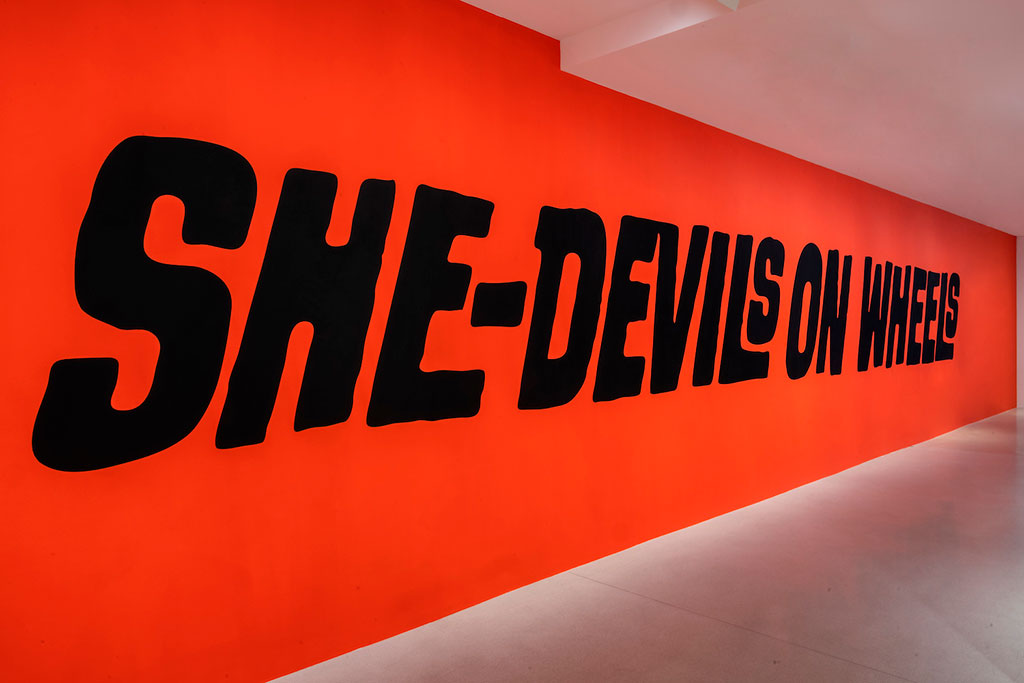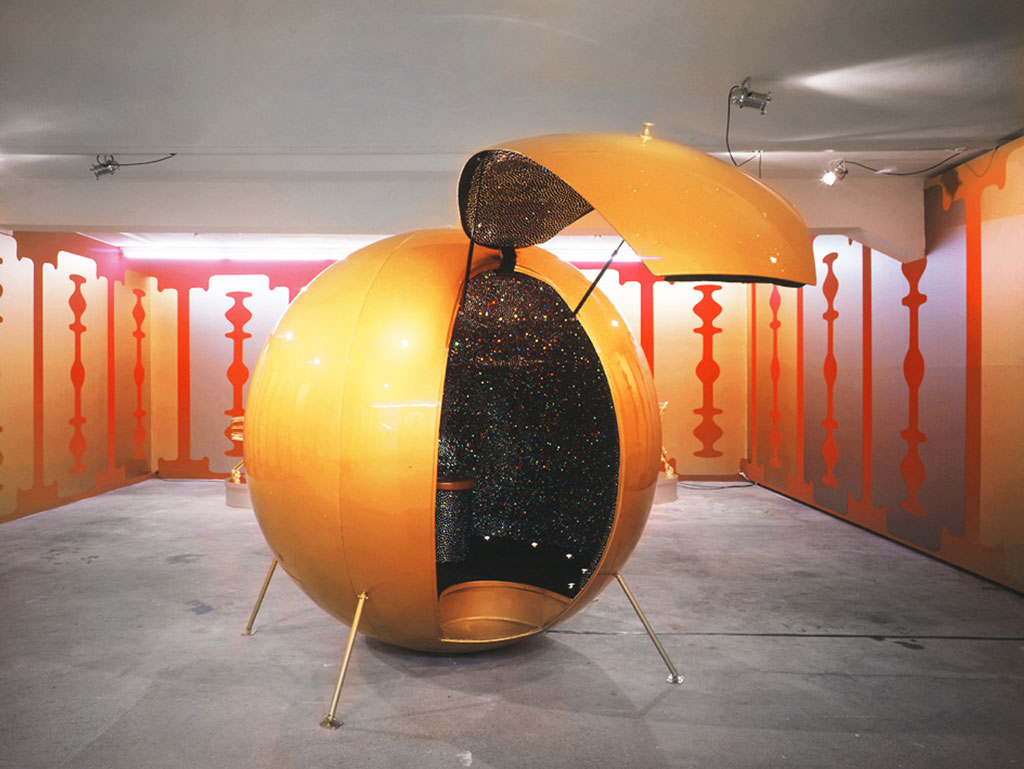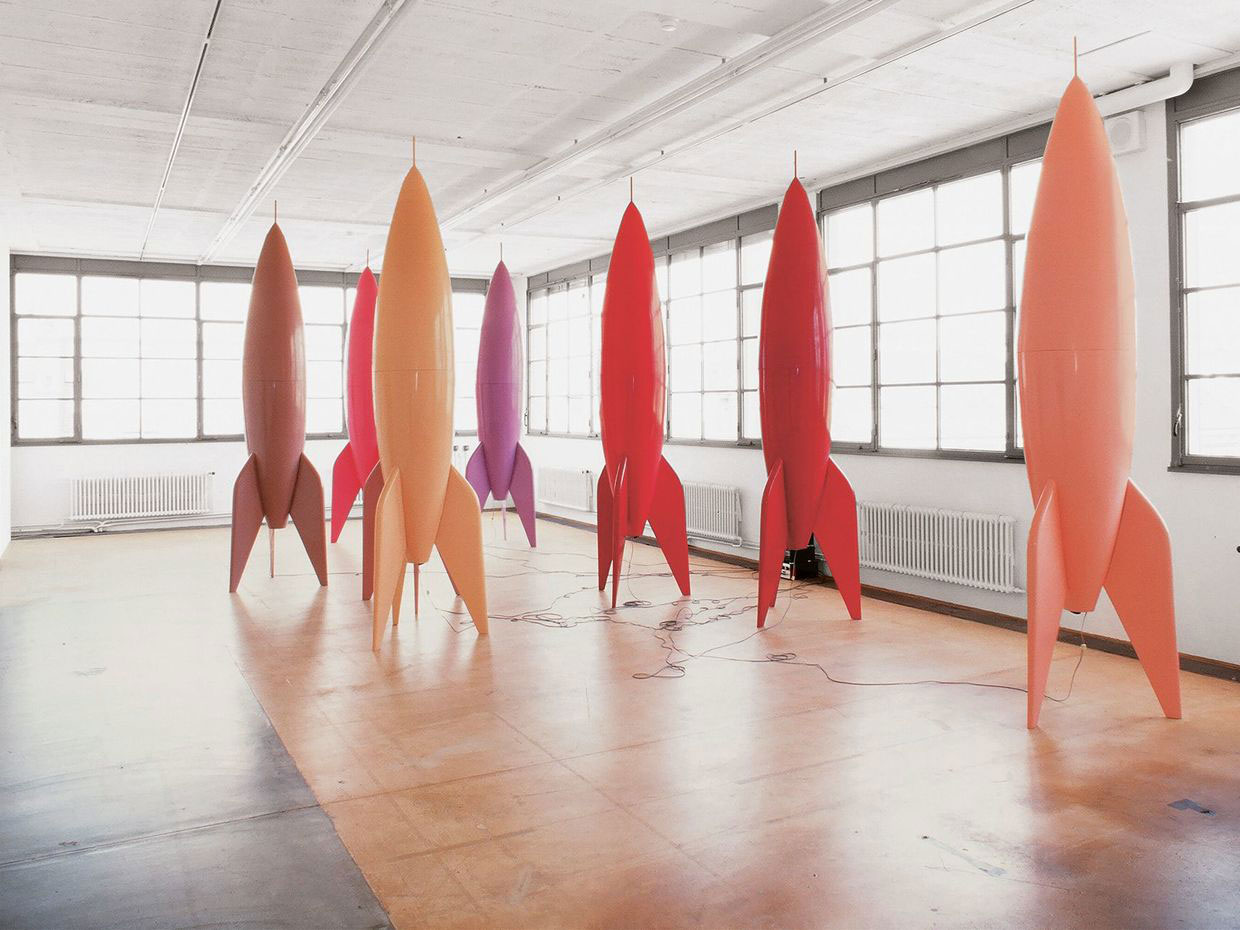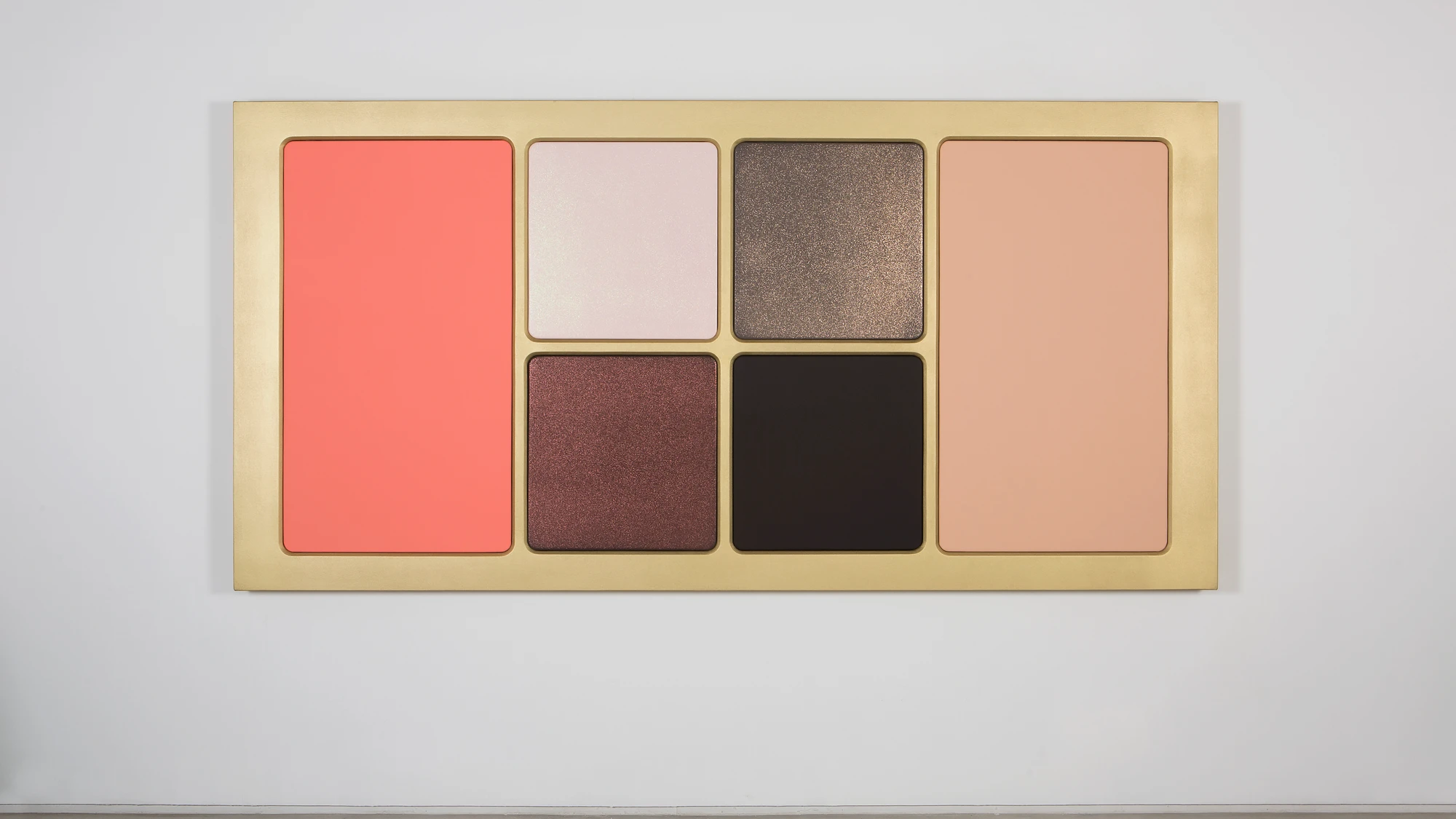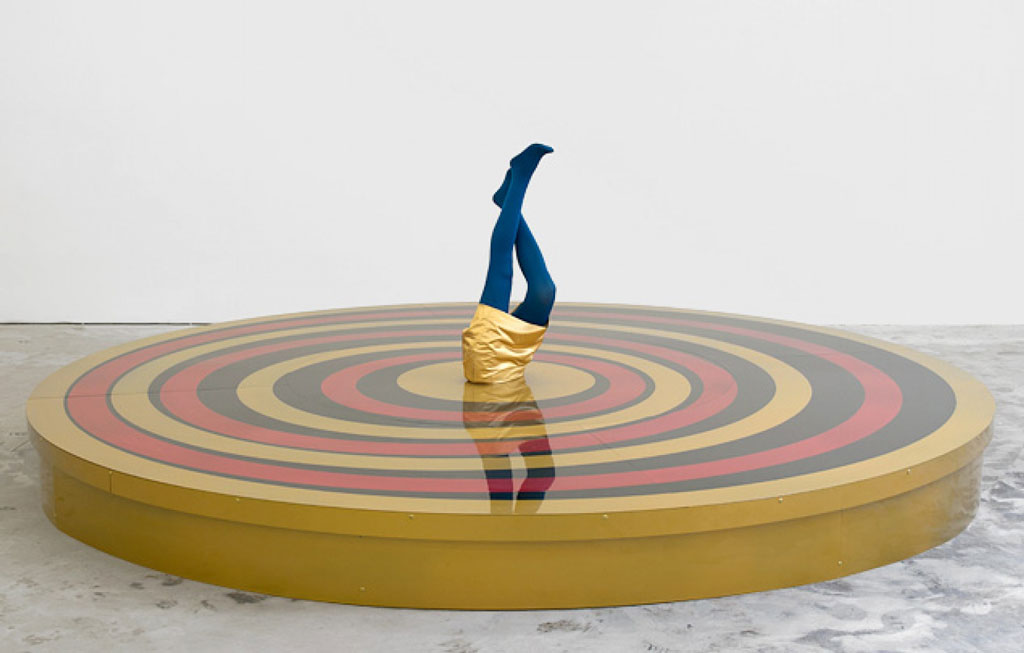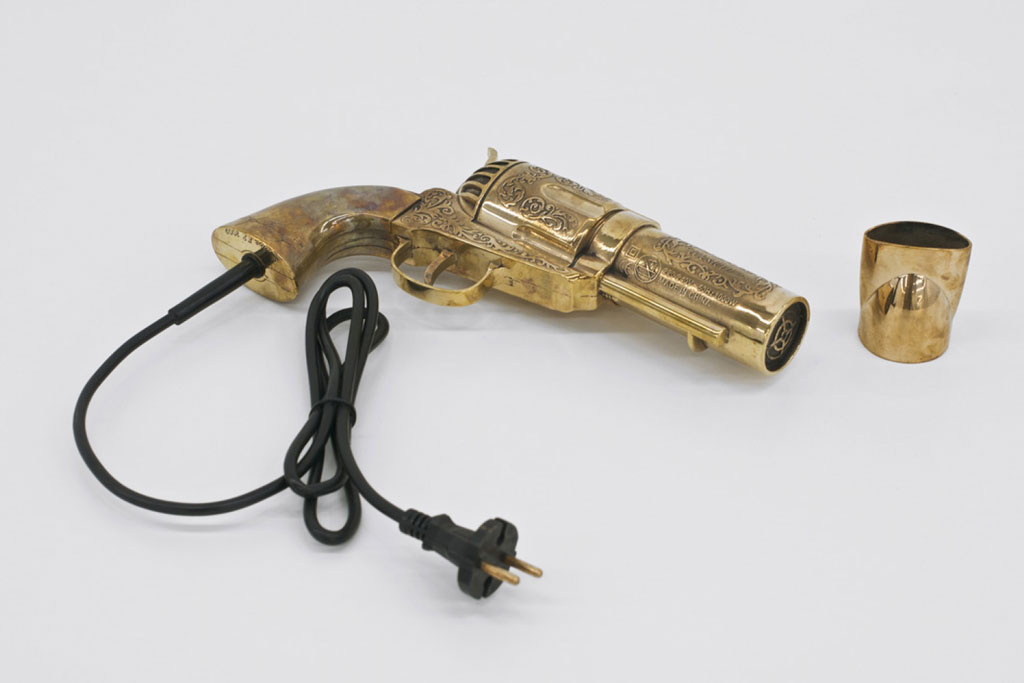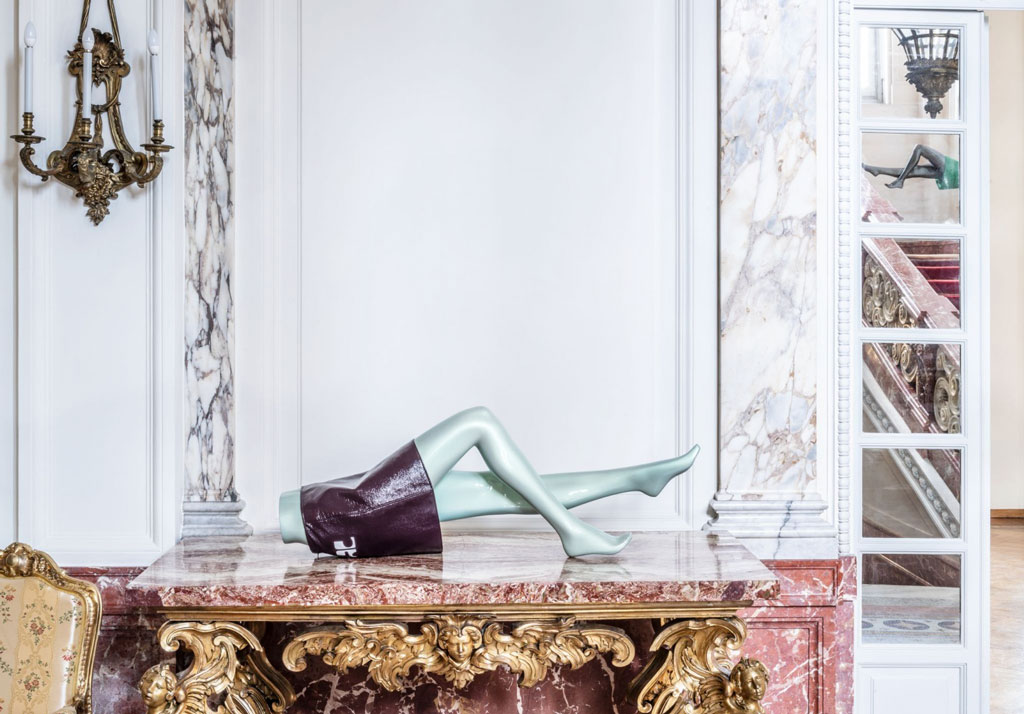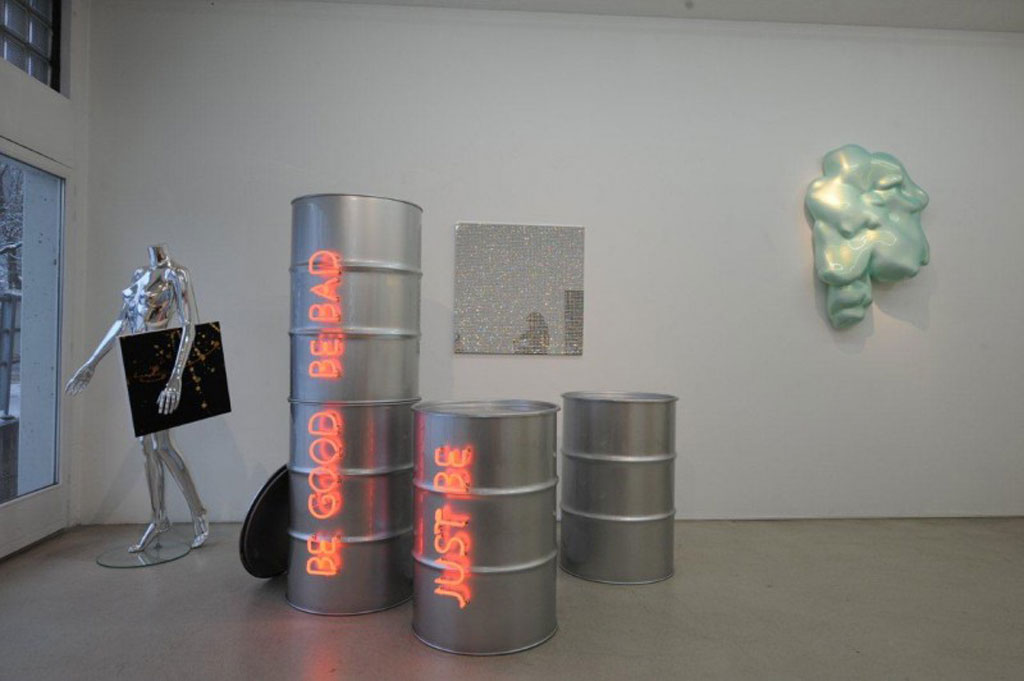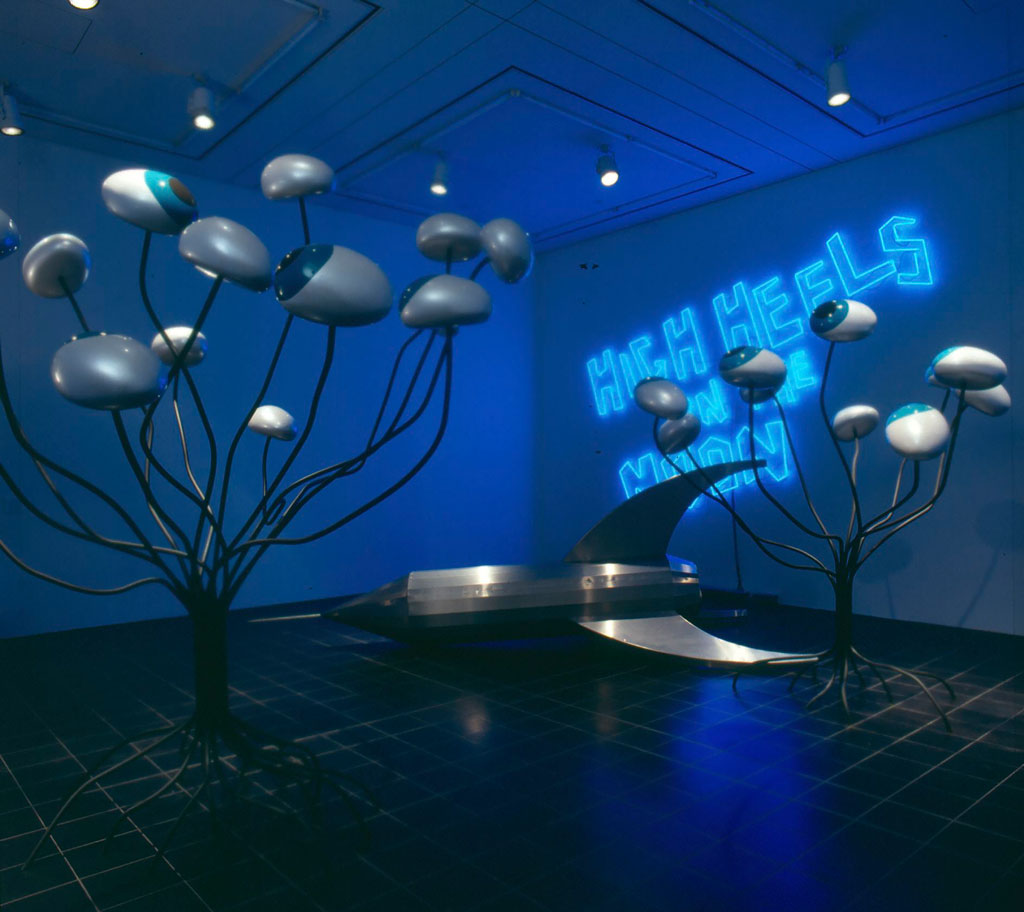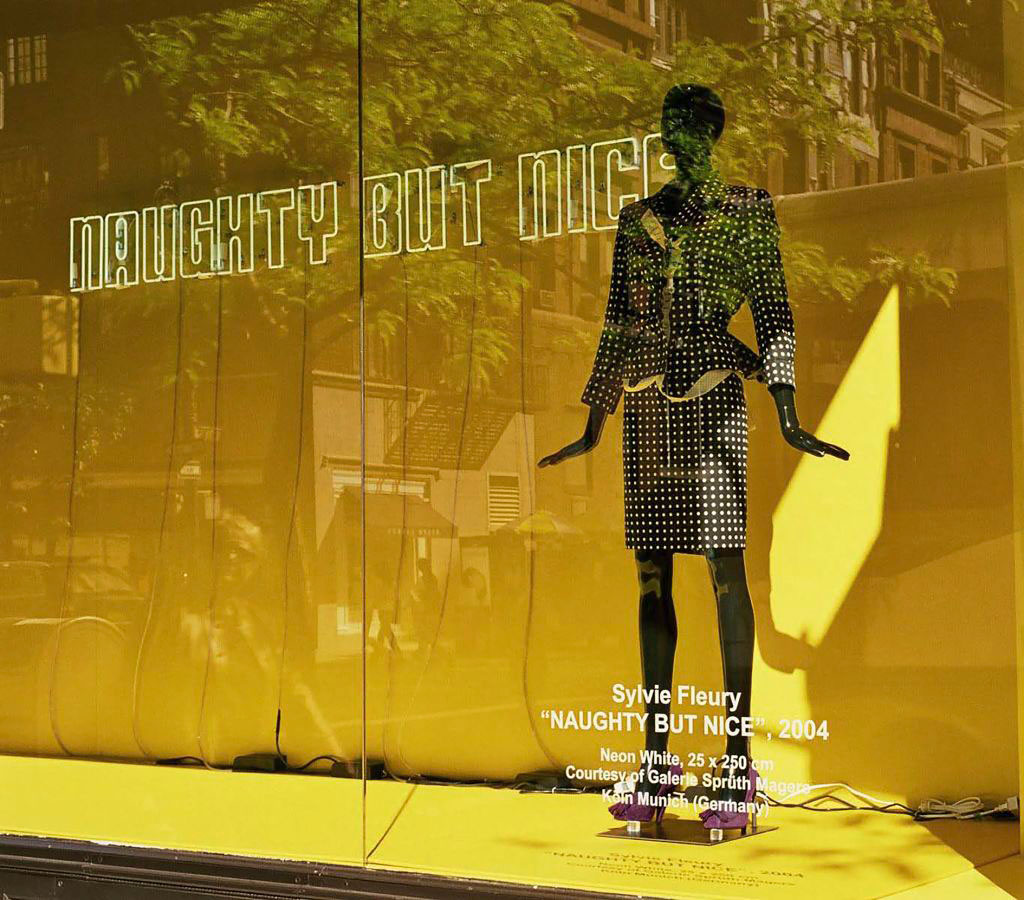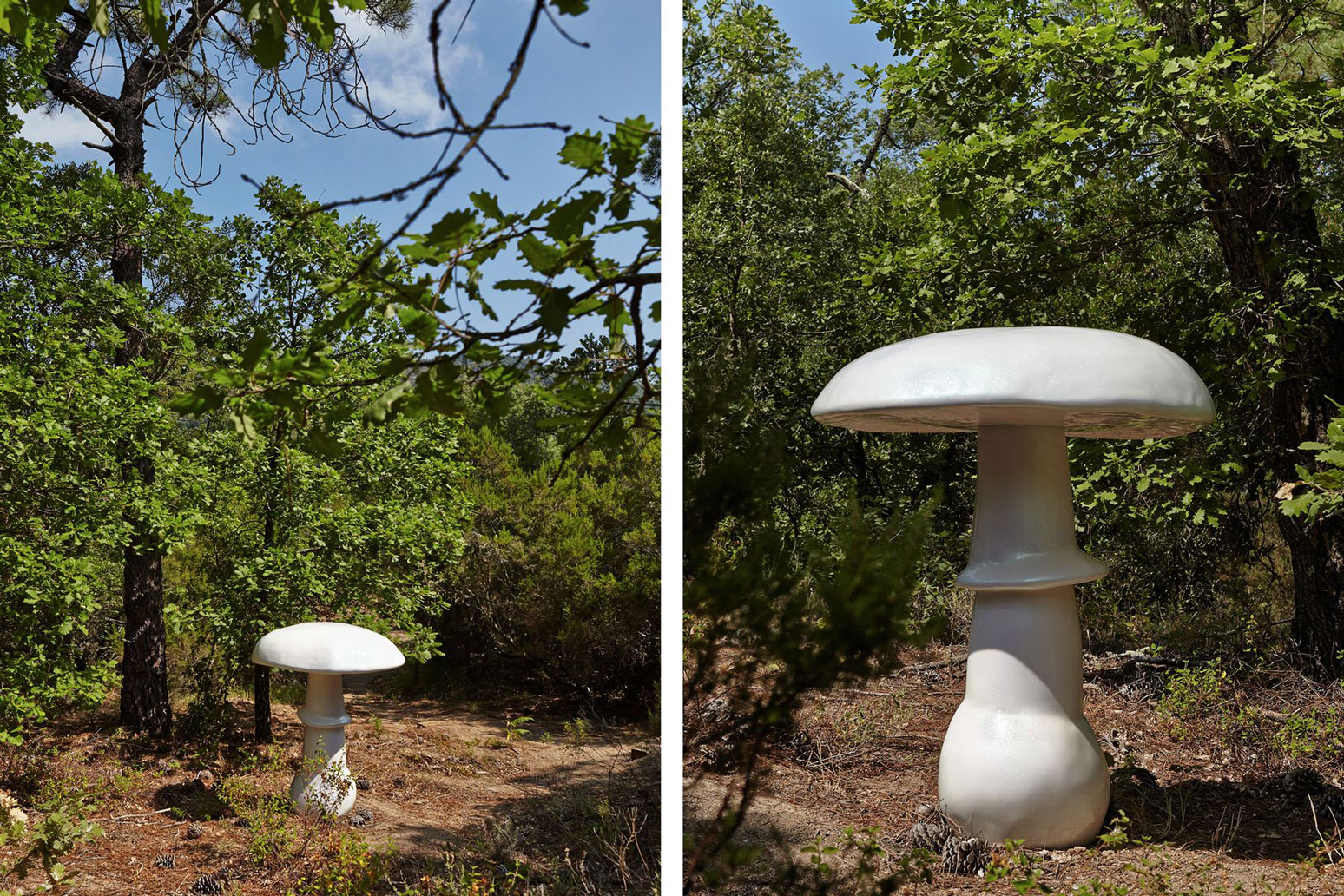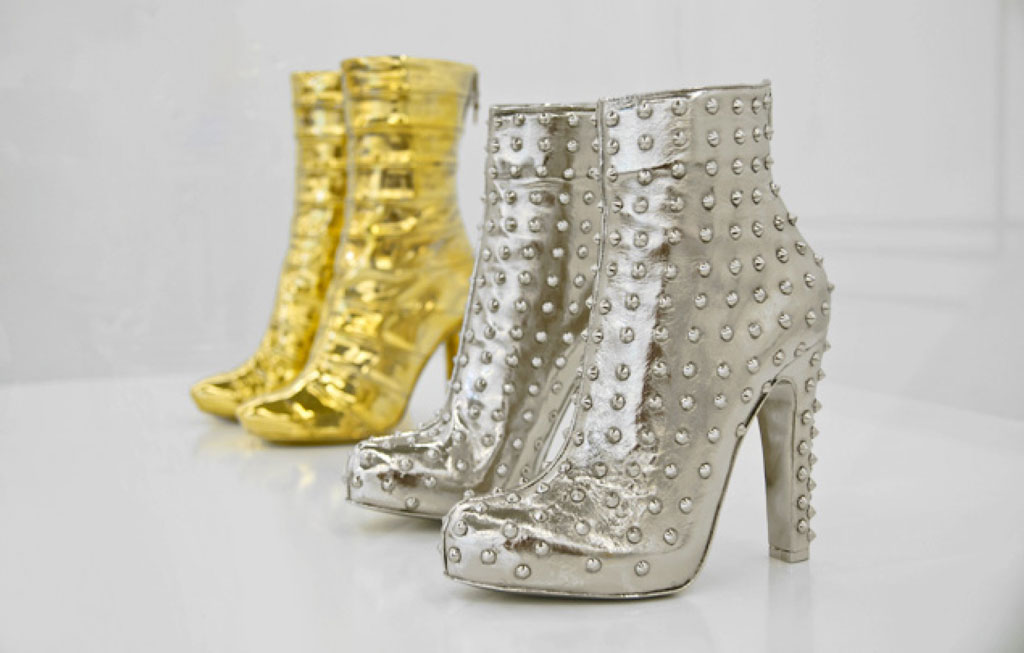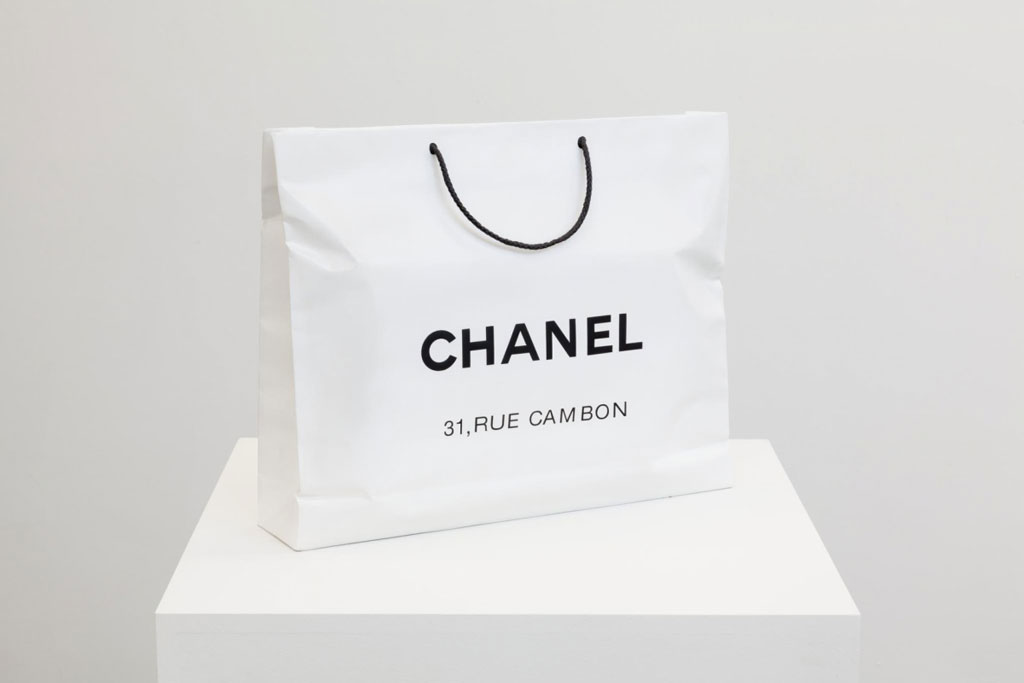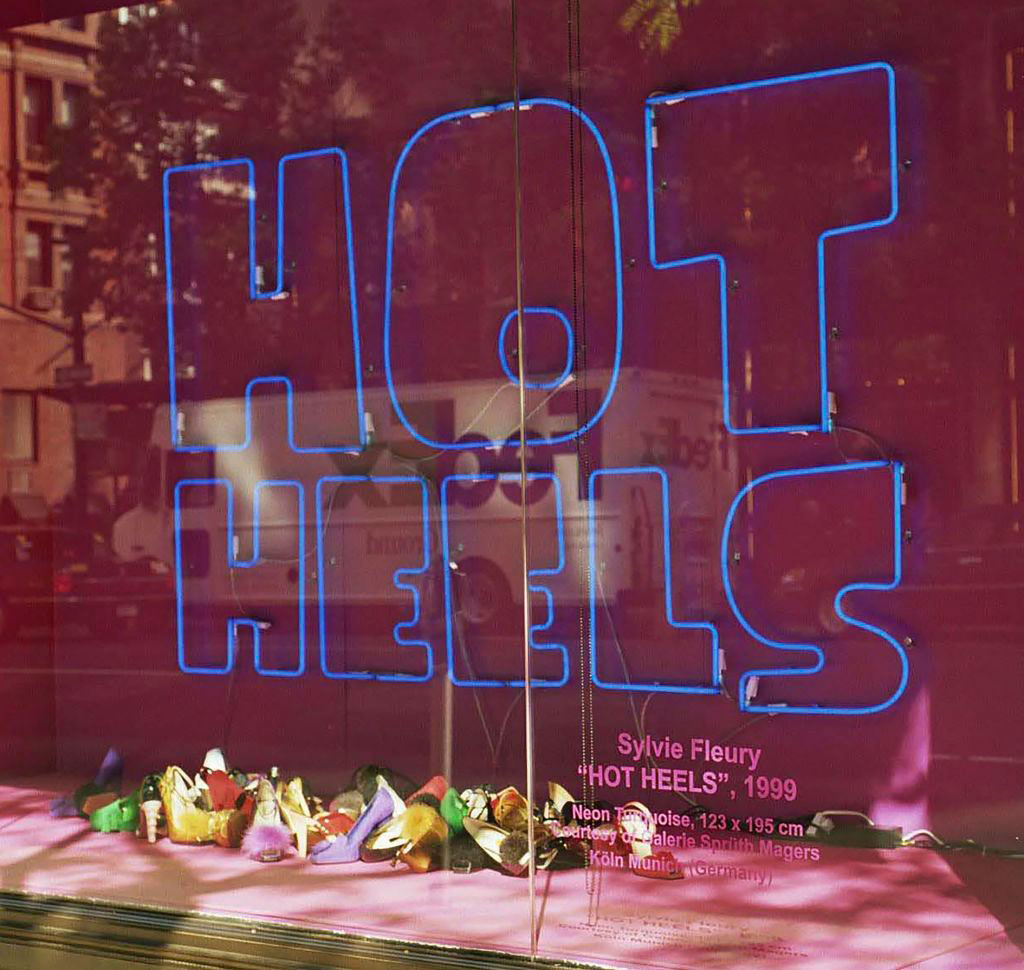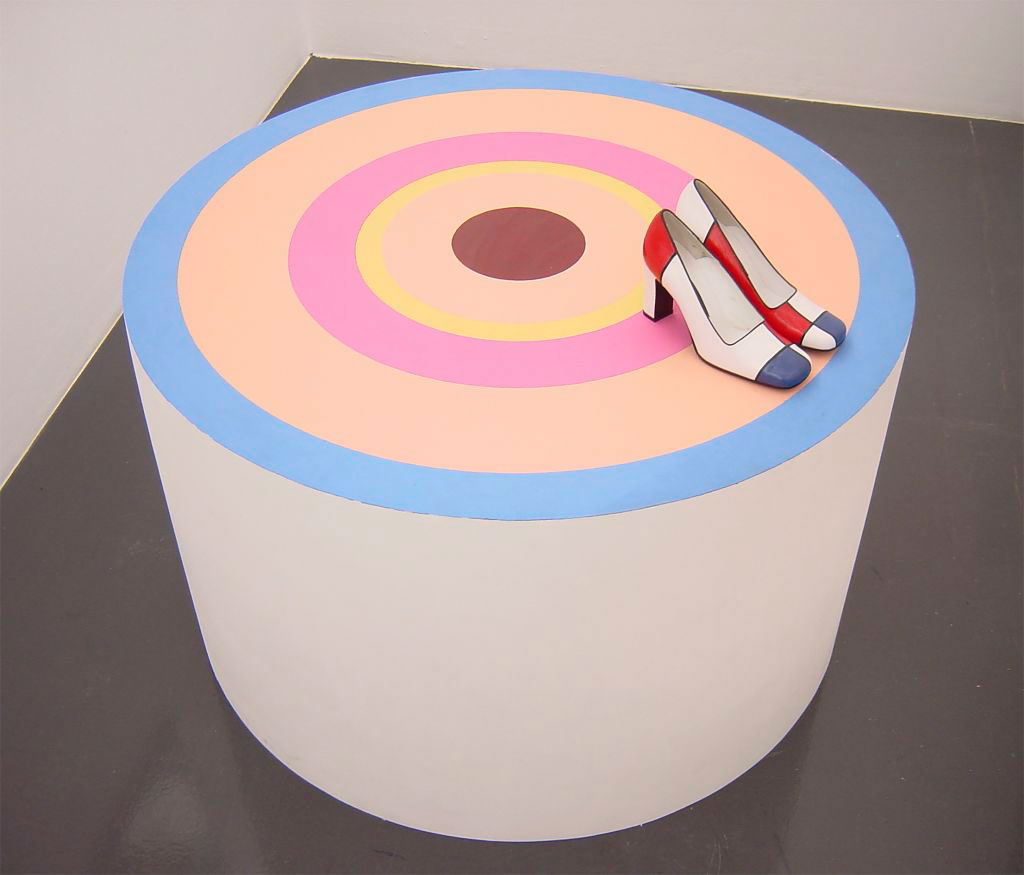TRACES: Sylvie Fleury
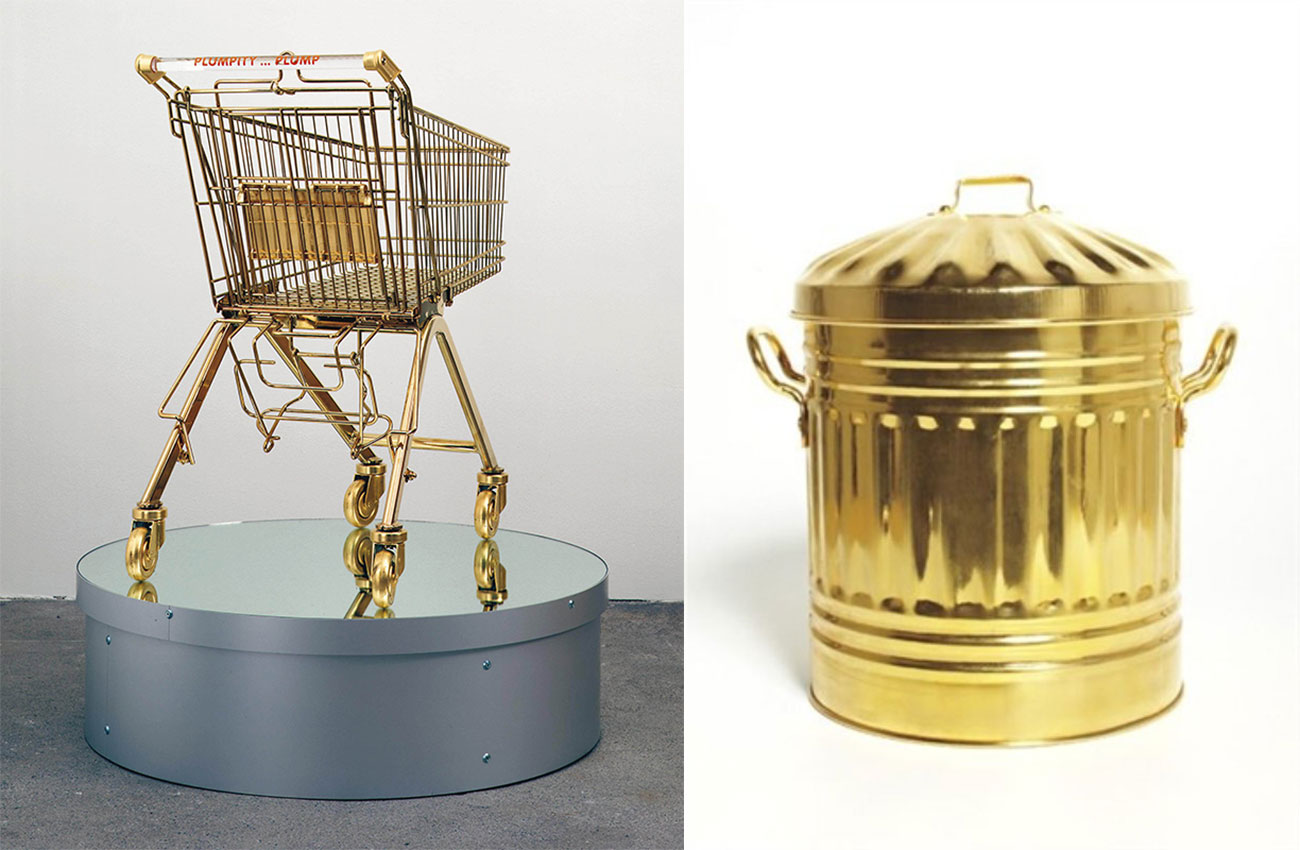 Today is the occasion to bear in mind the contemporary Swiss artist Sylvie Fleury (24/6/1961- ). She is known for her mises-en-scène of glamour, fashion and luxury products. Although at first glance her works may seem like an affirmation of the consumer society and its values, on closer inspection a more subtle commentary on superficial beauty becomes apparent. Her objects, wall pieces, pictures and installations assume an intrinsic value far exceeding the mere affirmation of brand names. Through documents or interviews, starting with: moments and memories, we reveal out from the past-unknown sides of big personalities, who left their indelible traces in time and history…
Today is the occasion to bear in mind the contemporary Swiss artist Sylvie Fleury (24/6/1961- ). She is known for her mises-en-scène of glamour, fashion and luxury products. Although at first glance her works may seem like an affirmation of the consumer society and its values, on closer inspection a more subtle commentary on superficial beauty becomes apparent. Her objects, wall pieces, pictures and installations assume an intrinsic value far exceeding the mere affirmation of brand names. Through documents or interviews, starting with: moments and memories, we reveal out from the past-unknown sides of big personalities, who left their indelible traces in time and history…
By Efi Michalarou
 Sylvie Fleury was born in Geneva, Switzerland. After her inittial schooling, her parents sent her to New York City to work as an au pair. She ended up falling in with a group of NYU students working on short art films She then went on to study photography at the Germain School of Photography in 198. While living in New York she worked as an assistant for fashion photographer Richard Avedon for one day. She then travelled onto India where she encountered learned Bharatanatyam dance she returned to Geneva and worked for the Red Cross. Under the pseudonym of Silda Brown, she began to collect items marked with a red cross. She converted her apartment into a dentist’s cabinet because she was able to acquire a practice facility at a reasonable price. In 1990 she met the Swiss performance artist John Armleder from Geneva and became his assistant. In the same year she and Armleder moved to Villa Magica, a large old town house on the outskirts of Geneva. After shopping one day, Fleury stopped into an art gallery and when she set her armful of bags on the floor and claimed them as sculpture. From thereon she began her exploration of the ready made, often in the form of a crossover between fashion and art such as other nontraditional mediums like motorcycles and vinyl banners long before the more recent trend towards collaborations with brands. As the artist says “I’ve always wanted to transform reality, to transform everyday objects. That’s perhaps why I am interested in fashion. Fashion trends reflect our time, but also produce codes that I’ve always wanted to appropriate and play with”. The commodification of beauty and wellness are rendered in slick, highly produced objects d’art with human-scale makeup palettes and neon signs expressing state of the art aphorisms appropriated from perfume brands. Fleury’s complete works cross elements of Pop and Conceptual art, whereby the conceptual art is more determining; more precisely like the idea, which Marcel Duchamp established with his Ready-mades. An object of the world of products is transferred into the museum, and solely through this change of location becomes art. Admittedly: contrary to the inventor of conceptual art, Sylvie Fleury changes her selected consumer item. She gilds them, inflates them into a monstrous state or ironises them through her manner of staging: a golden shopping trolley or a car tire is thus presented on a shiny pedestal. Sylvie Fleury is known for her tender, cynical critique of consumer culture as played out in the worlds of beauty, fashion an luxury products. Although at first glance her works may seem like an affirmation of the consumer society and its values, on closer inspection a more subtle commentary on superficial beauty becomes apparent. Her objects, wall pieces, pictures and installations assume an intrinsic value far exceeding the mere affirmation of brand names. Hence, the slogans Fleury renders in brass letters, in crystal or neon writing are not merely the logos of internationally renowned couture houses, perfumeries or glossy magazines. By using these logos, Fleury evokes humanity’s ideals and aspirations related to them. The slogan “Yes to All” refers not only to the profane computer command in the Microsoft operating system, but it can also be seen as a cynical comment of neo-liberalist politics where places like shopping malls become ritual pilgrimage sites, and retail therapy an aspirational hobby in most worlds cultures today. Sylvie Fleury’s bronze sculptures always demonstrate detailed knowledge of the artistic aesthetics of Pop Art and Minimal Art, without her work developing into Art on Art, but finding its identity in what Andreas Schalhorn aptly described as “virtue of the surface”. The verve of Fleury’s sculptures lies in their materiality, their significance in the artistic mise-en-scène of the mix of aesthetic manipulation mechanisms (advertising, fashion, colour, materials) and secondary needs (beauty, relaxation, satisfaction of desire). In the mid-1990s Eric Troncy pointed out that Fleury’s sculptures were so positively and provocatively superficial, because she undermined the informed expectations and reception patterns of 1980s art – and this was precisely where her incomparable quality lay. Moreover, no artist has probably ever combined the idea of Duchamp’s Ready Made with Warhol’s affirmation of the consumer world in such an unbiased way. In Fleury’s sculptures, the profane assumes an aura of sanctity. One is inclined to associate Fleury’s “Mushrooms” with a reference to hallucinogenic drugs, but also with the world of fairy-tales: the viewer imagines himself like Alice in Wonderland. In Fleury’s Mushrooms, these strategies of infantilisation and caricature are combined with a reference to the male-connoted world of motorsports: the fibre-glass structures with multiple coats of lacquer are reminiscent of the tuning culture for sports cars. They generate a disconcerting frisson in view of the creation of such hybrid worlds and the subtle combination of masculine and feminine.
Sylvie Fleury was born in Geneva, Switzerland. After her inittial schooling, her parents sent her to New York City to work as an au pair. She ended up falling in with a group of NYU students working on short art films She then went on to study photography at the Germain School of Photography in 198. While living in New York she worked as an assistant for fashion photographer Richard Avedon for one day. She then travelled onto India where she encountered learned Bharatanatyam dance she returned to Geneva and worked for the Red Cross. Under the pseudonym of Silda Brown, she began to collect items marked with a red cross. She converted her apartment into a dentist’s cabinet because she was able to acquire a practice facility at a reasonable price. In 1990 she met the Swiss performance artist John Armleder from Geneva and became his assistant. In the same year she and Armleder moved to Villa Magica, a large old town house on the outskirts of Geneva. After shopping one day, Fleury stopped into an art gallery and when she set her armful of bags on the floor and claimed them as sculpture. From thereon she began her exploration of the ready made, often in the form of a crossover between fashion and art such as other nontraditional mediums like motorcycles and vinyl banners long before the more recent trend towards collaborations with brands. As the artist says “I’ve always wanted to transform reality, to transform everyday objects. That’s perhaps why I am interested in fashion. Fashion trends reflect our time, but also produce codes that I’ve always wanted to appropriate and play with”. The commodification of beauty and wellness are rendered in slick, highly produced objects d’art with human-scale makeup palettes and neon signs expressing state of the art aphorisms appropriated from perfume brands. Fleury’s complete works cross elements of Pop and Conceptual art, whereby the conceptual art is more determining; more precisely like the idea, which Marcel Duchamp established with his Ready-mades. An object of the world of products is transferred into the museum, and solely through this change of location becomes art. Admittedly: contrary to the inventor of conceptual art, Sylvie Fleury changes her selected consumer item. She gilds them, inflates them into a monstrous state or ironises them through her manner of staging: a golden shopping trolley or a car tire is thus presented on a shiny pedestal. Sylvie Fleury is known for her tender, cynical critique of consumer culture as played out in the worlds of beauty, fashion an luxury products. Although at first glance her works may seem like an affirmation of the consumer society and its values, on closer inspection a more subtle commentary on superficial beauty becomes apparent. Her objects, wall pieces, pictures and installations assume an intrinsic value far exceeding the mere affirmation of brand names. Hence, the slogans Fleury renders in brass letters, in crystal or neon writing are not merely the logos of internationally renowned couture houses, perfumeries or glossy magazines. By using these logos, Fleury evokes humanity’s ideals and aspirations related to them. The slogan “Yes to All” refers not only to the profane computer command in the Microsoft operating system, but it can also be seen as a cynical comment of neo-liberalist politics where places like shopping malls become ritual pilgrimage sites, and retail therapy an aspirational hobby in most worlds cultures today. Sylvie Fleury’s bronze sculptures always demonstrate detailed knowledge of the artistic aesthetics of Pop Art and Minimal Art, without her work developing into Art on Art, but finding its identity in what Andreas Schalhorn aptly described as “virtue of the surface”. The verve of Fleury’s sculptures lies in their materiality, their significance in the artistic mise-en-scène of the mix of aesthetic manipulation mechanisms (advertising, fashion, colour, materials) and secondary needs (beauty, relaxation, satisfaction of desire). In the mid-1990s Eric Troncy pointed out that Fleury’s sculptures were so positively and provocatively superficial, because she undermined the informed expectations and reception patterns of 1980s art – and this was precisely where her incomparable quality lay. Moreover, no artist has probably ever combined the idea of Duchamp’s Ready Made with Warhol’s affirmation of the consumer world in such an unbiased way. In Fleury’s sculptures, the profane assumes an aura of sanctity. One is inclined to associate Fleury’s “Mushrooms” with a reference to hallucinogenic drugs, but also with the world of fairy-tales: the viewer imagines himself like Alice in Wonderland. In Fleury’s Mushrooms, these strategies of infantilisation and caricature are combined with a reference to the male-connoted world of motorsports: the fibre-glass structures with multiple coats of lacquer are reminiscent of the tuning culture for sports cars. They generate a disconcerting frisson in view of the creation of such hybrid worlds and the subtle combination of masculine and feminine.

